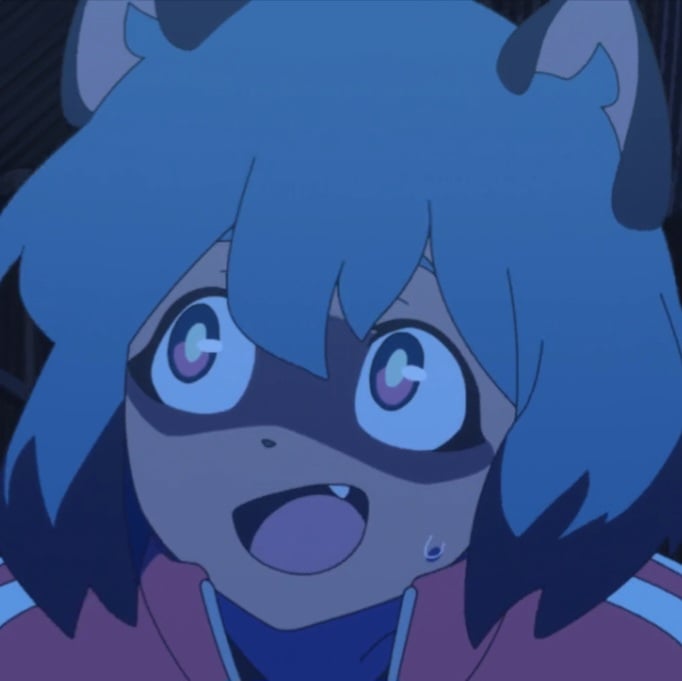Most fursonas do wear clothes. But putting aside the aesthetics factor and focusing more on the practicality-- would a furry anthro in an anthro society wear clothes?
Focusing solely on mammalian anthros with fur. Well, they have fur, so temperature regulation and the elements aren’t really reasons to wear clothes given that they have natural, furry clothes already. Wearing clothes on top of that might be too warm, especially in the summer.
The thing I’m wondering is, would anthros figure out to make clothings themselves? And if they do, how would they look? Having their body completely covered in fur might make shirts and pants irrelevant, which means they might never develop them in the first place. I suppose other articles of clothings like armbands, headbands, etc would still exist, and so would practical items like glasses or watches.
Of course, clothing serves more purpose than just covering bare skins. They serve aesthetic purposes and shows our identity. For example, police anthros might wear some sort of stuff to distinguish themselves. And much like humans, anthros would probably have a culture around clothing, but how their clothing would look and how much it’ll cover is the question.
Would most anthros only wear head and armbands? Maybe just something to cover their bottoms and nothing else? Or would they wear clothes similar to us?
Furthermore, different animals have different fur with different thickness, length, shapes, forms, etc. These different furs require different clothing. Anthros with thicker fur may wear less clothing than ones with thinner fur. Even more, different anthros will have different body shape and size. Clothing for rabbit sonas may not fit bear sonas.
Anthros might have different size standards for different species to account their differences. Imagine how hard it’d be to manufacture all the different variations, though. Any clothes store would have to take into account multiple species and multiple sizes for that species.
Well, I think that’s interesting to think about.


Depends on the world they are set in, but in most cases I think the answer would be yes.
In a multi-species world, for example, even though furry species would have less incentive to turn to clothing solutions, both in the temperature and resistance departments, there would still be other species for which clothes would provide the same advantages it provides humans. Cold-blooded species are good candidates for clothes-as-temperature-control, and hairless species for clothes-as-defense-mechanism.
On single-species worlds, there’s still, well, the world. Weather changes more rapidly than species adapt, so clothes could be invented as a way to deal with a suddenly colder climate.
If that doesn’t fit, there’s culture. Maybe, for centuries, taking care of their fur coat, and keeping it looking healthy and beautiful, has been an almost impossible endeavor. Clothes exist only to help the worst of the injured and diseased (for example, helping burn victims dealing with temperature management, or letting people infected with a hair-losing disease keep presentable), but the richer folks co-opt those clothes, decorate them, and start wearing them to hide the inevitable blemishes on they fur coats, and it becomes a status a symbol that eventually trickles down into lower classes. Many years later, once
skinfur care starts improving, taking care of your fur becomes much more feasible, and the richest shift into wearing less clothing, it propagates, and now the only clothing that survives is that which either indicates status (displays of rare materials or colors), or has practical uses (pockets). Or maybe a culture of “nakedness” being seen as reprehensible has already developed, so while the richer folk are able to get away with it to some extent, the low/middle classes doesn’t feel like they can, and they keep using full clothing, and it becomes a class discriminator.I think that, for those cases, accessories would be a more obvious choice. Pendants, collars, hats, arm- and tail-bands, etc. Clothes as we know them, a full set of cloth from head to toe, covering everything, seems like would be a harder sell to come naturally without external factors driving them in. (Or I just lack imagination in this particular scenario.)
(And shoes! As much as we, furries, like our beans exposed, shoes are something that I think every tool-capable civilization would eventually create. We even created horseshoes for horses, so not even hooved species would be spared the inevitability of shoes.)
That’s a very interesting case!
A world were different species have different sizes/needs regarding clothing is a world where clothing resists industrialization and mass production. Mass produced clothes could be derogatorily generic. Unless you were one of the lucky species/individual that fit the “standard” form that was profitable to produce, you would only buy those if you didn’t have money for tailor-made clothes.
Each town would have their own tailors, who knew how to produce adequate clothing for the species in those towns. Before you moved into a town you’d have to check either tailors or seamstresses, to see if they were able to produce clothes that fit your species, else you’d have to choose another town. These clothing specializations could be a factor driving group/society/culture formation, and there could even be cultural conflicts between species that were usually catered for, and those who weren’t. It would be a factor uniting certain species together, and keeping others segregated.